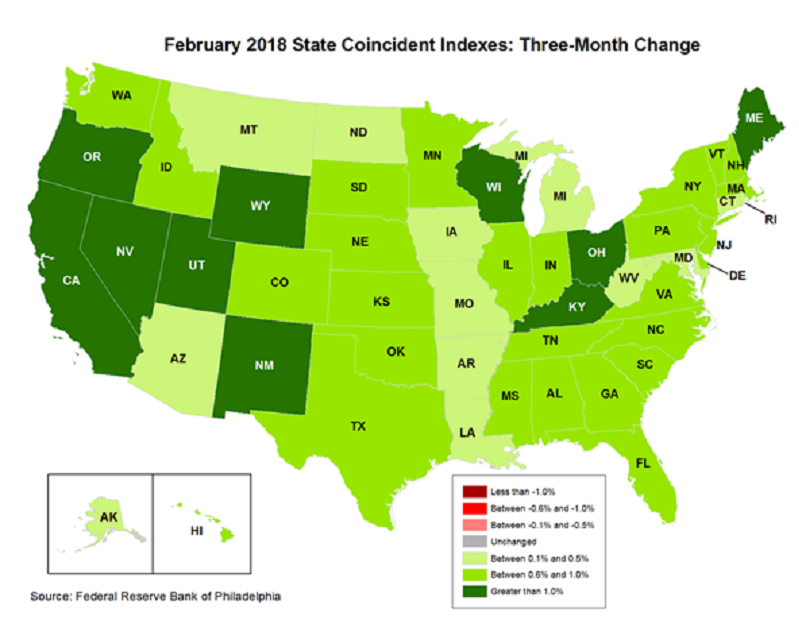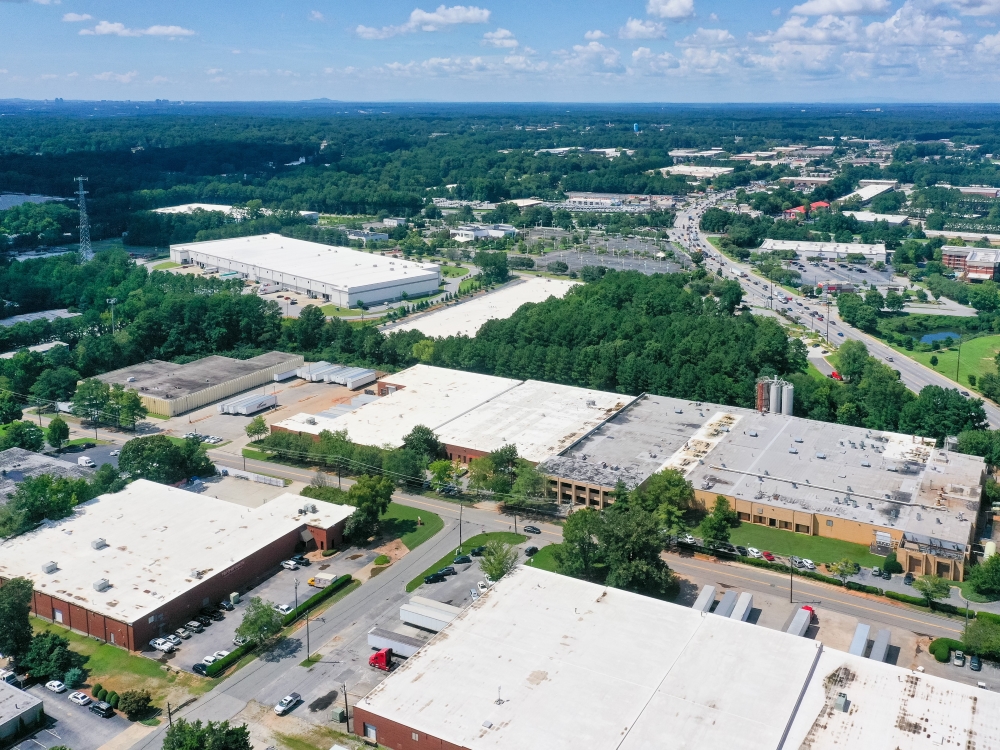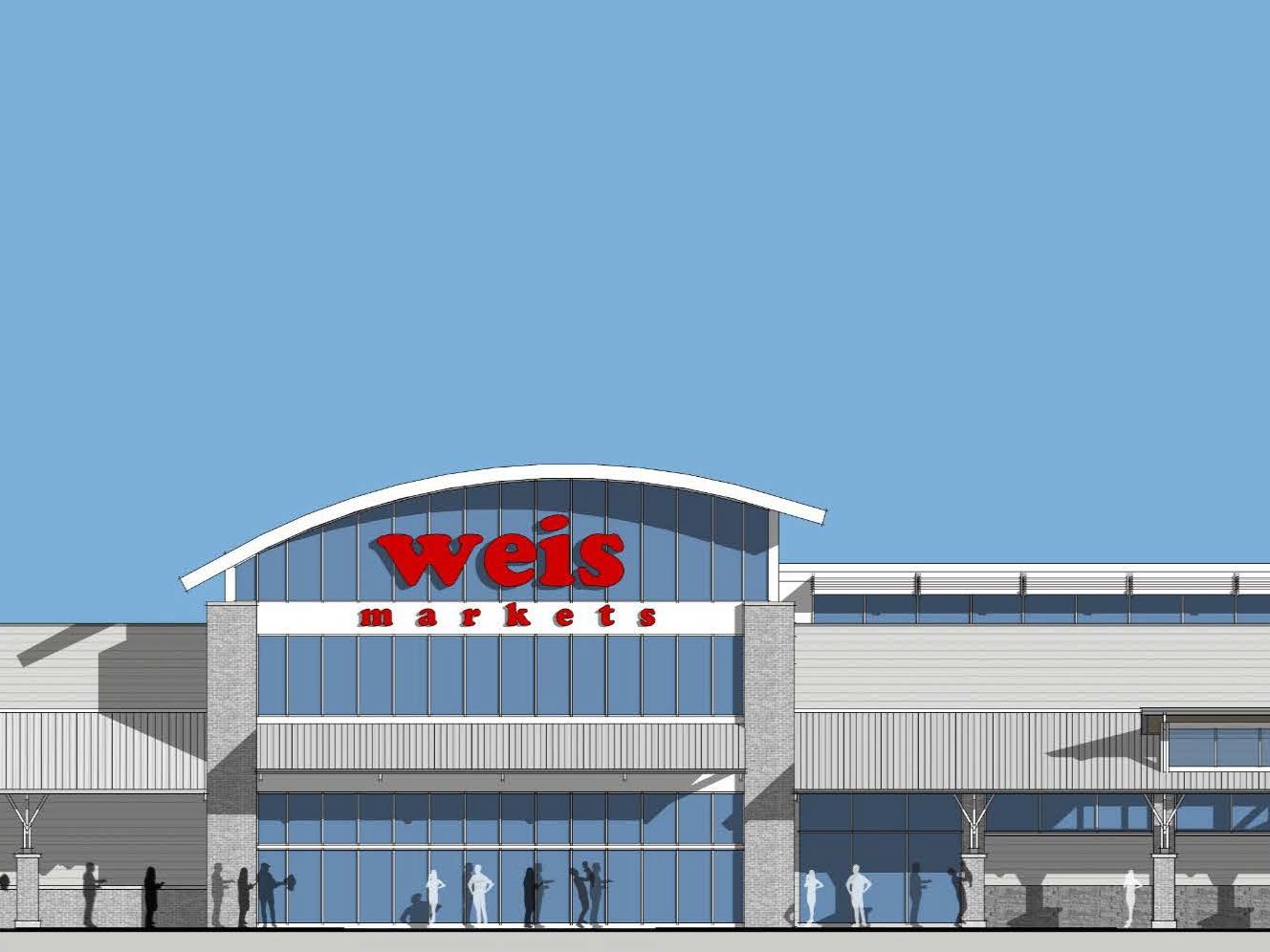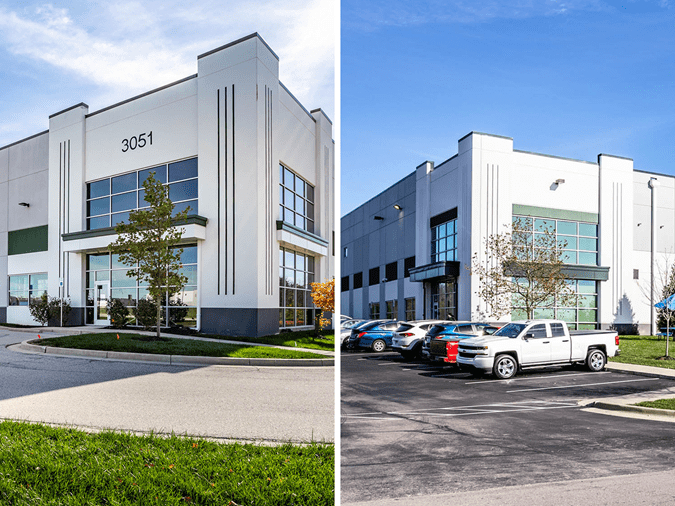Economy Watch: State Labor Markets, Construction Costs Stay in Growth Mode
Over the past three months, all 50 states have posted increases in the Philadelphia Fed’s index of economic indicators. Construction materials prices in March were up 5.8 percent year over year, the Associated Builders and Contractors reported, even as declining natural gas prices help mask rapidly rising costs in other categories.
By D.C. Stribling
 The Federal Reserve Bank of Philadelphia reported on Tuesday that its coincident indexes increased in 46 states, decreased in two, and remained stable in two in February compared with the previous month. Over the past three months, the indexes increased in all 50 states. The trend for each state’s index follows the trend of its gross domestic product, so long-term growth in the state’s index matches long-term growth in its GDP.
The Federal Reserve Bank of Philadelphia reported on Tuesday that its coincident indexes increased in 46 states, decreased in two, and remained stable in two in February compared with the previous month. Over the past three months, the indexes increased in all 50 states. The trend for each state’s index follows the trend of its gross domestic product, so long-term growth in the state’s index matches long-term growth in its GDP.
The coincident indexes combine four state-level indicators to summarize current economic conditions in a single statistic, according to the Fed. The four state-level variables in each coincident index are payroll employment, average hours worked in manufacturing by production workers, the unemployment rate, and wages and salaries, adjusted for inflation.
Separately, the Associated Builders and Contractors (ABC) reported on Tuesday that prices for “inputs to construction materials” (including energy) grew 0.8 percent in March and are 5.8 percent higher than at the same time last year. Inflation in the building trades is thus higher than the consumer price index. ABC crunches Bureau of Labor Statistics data to generate its numbers.
The upward pressure on construction materials prices was masked to a certain extent by natural gas, ABC said. Natural gas prices fell 32.1 percent in March — after rising 23.5 percent in February — and are down nearly 13 percent compared with last year. Steel prices rose in March, but larger increases are coming as the price of steel to be delivered is increasingly subject to the renegotiation of expiring contracts.







You must be logged in to post a comment.